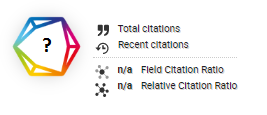META-ANALISIS PENGGUNAAN BAHAN AJAR TERHADAP PRESTASI MATEMATIKA
DOI:
https://doi.org/10.46984/sebatik.v25i2.1472Keywords:
Efek, Bahan Ajar, Prestasi, Matematika, Meta-AnalisisAbstract
Penggunaan bahan ajar yang efektif dianggap sebagai aspek penting dari kurikulum matematika yang baru dikembangkan dalam menghadapi situasi pandemi Covid-19. Studi penggunaan bahan ajar yang memiliki impak dalam pembelajaran matematika yang mengungkapkan berbagai manfaat bagi siswa telah banyak dilakukan para peneliti. Penelitian ini bertujuan untuk mengetahui pengaruh semua bentuk bahan ajar matematika yang digunakan terhadap prestasi akademik siswa. Studi meta-analisis ini termasuk penelitian empiris tentang penggunaan bahan ajar matematika. Penelitian ini membahas kesenjangan dalam literatur dengan memeriksa efisiensi pembelajaran relatif dari beberapa bentuk bahan ajar. Selain itu, penelitian ini membahas sejauh mana penggunaan bahan ajar dalam pembelajaran matematika dan variabel moderator yang mempengaruhi penggunaan bahan ajar matematika dijelaskan secara rinci. Tujuan utama dari penelitian ini adalah untuk mengetahui pengaruh pembelajaran matematika dengan pendayagunaan bahan ajar terhadap prestasi siswa, dengan menganalisis penelitian yang diterbitkan antara tahun 2016 sampai dengan 2021. 27 hasil penelitian yang telah dipublikasikan antara tahun 2016-2020 dimasukkan dalam meta-analisis dan dihitung effect size dari masing-masing penelitian. Penggunaan bahan ajar dalam pembelajaran matematika memiliki pengaruh yang positif dan tinggi terhadap prestasi belajar. Berdasarkan analisis variabel mediator yang berkaitan dengan karakteristik instruksional, terdapat perbedaan yang signifikan pada variabel jenis prestasi matematika, jenis bahan ajar, dan metode penggunaan bahan ajar. Akan tetapi variabel moderator yang terkait dengan karakteristik metodologi tidak memiliki pengaruh moderasi yang signifikan terhadap prestasi belajar.
References
Baist, A., Fadillah, A., & Nopitasari, D. (2019). Students Self Regulated Learning in Numerical Methods Course using Computational Mathematics Teaching Materials. Malikussaleh Journal of Mathematics Learning, 2(1), 1–4.
Basarmak, U. (2019). The Effect Of Digital Teaching Material (Public Service Ad) Development Process On Preservice Teachers’ Creative Thinking Skills. Malaysian Online Journal of Educational Technology, 7(4), 126–144.
Batdi, V., & Talan, T. (2019). Augmented Reality Applications: A Meta-Analysis and Thematic Analysis. Turkish Journal of Education, 8(4), 276–297.
Burns, B., & Hamm, E. (2011). A comparison of concrete and virtual manipulative use in third and fourth grade mathematics. School Science and Mathematics, 111(6), 256–261.
Byun, J., & Joung, E. (2018). Digital game-based learning for K-12 mathematics education: A meta-analysis. School Science and Mathematics, 1–14.
Callaman, R. A., & Itaas, E. C. (2020). Students’ Mathematics Achievement in Mindanao Context: A Meta-Analysis. Journal of Research and Advances in Mathematics Education, 5(2), 148–159.
Carbonneau, K. J., Marley, S. C., & Selig, J. P. (2013). A meta-analysis of the efficacy of teaching mathematics with concrete manipulatives. Journal of Educational Psychology, 105(2), 380–400.
Chen, C.-H., & Su, C.-Y. (2019). Using the BookRoll E-Book System to Promote Self-Regulated Learning, Self-Efficacy and Academic Achievement for University Students. Educational Technology & Society, 22(4), 33–46.
Demirkan, O. (2019). Pre-service Teachers’ Views about Digital Teaching Materials. Educational Policy Analysis and Strategic Research, 14(1), 1–22.
Dewi, N., Magfiroh, L., Nurkhalisa, S., & Dwijayanti, I. (2019). The Development of Contextual-Based Science Digital Storytelling Teaching Materials to Improve Students‘ Critical Thinking on Classification Theme. Journal of Turkish Science Education, 16(3), 364–378.
Gozuyesil, E., & Tanriseven, I. (2017). A Meta-analysis of the Effectiveness of Alternative Assessment Techniques. Eurasian Journal of Educational Research, 70, 37–56.
Hornburg, C. B., Shipley, H. B., Matthews, J. M., & McNeil, N. M. (2021). Improving Understanding of Mathematical Equivalence. Mathematics Teacher: Learning and Teaching PK-12, 114(1), 16–26.
Kablan, Z., Topan, B., & Erkan, B. (2013). The effectiveness level of material use in classroom instruction: a meta-analysis study. Educational Sciences: Theory & Practice, 13(3), 1629–1644.
Karakırık, E., & Aydın, E. (2016). Matematik nesneleri ve sanal manupulatifler. [Learning objects and virtual manipulatives] (E. Doğan, M ve Karakırık (ed.); Matematik). Nobel-Atlas Yayıncılık.
Kontaş, H. (2016). The Effect of Manipulatives on Mathematics Achievement and Attitudes of Secondary School Students. Journal of Education and Learning, 5(3), 10–20.
Koparan, T. (2017). Analysis of Teaching Materials Developed by Prospective Mathematics Teachers and Their Views on Material Development. Malaysian Online Journal of Educational Technology, 5(4), 8–28.
Kraft, M. A. (2020). Interpreting Effect Sizes of Education Interventions. Educational Researcher, 49(4), 241–253.
Kraft, M. A., & Hattie, J. (2021). Interpreting Education Research and Effect Sizes. Educational Leadership, 78(8).
Kreijns, K., Vermeulen, M., Buuren, H. V., & Acker, F. V. (2017). Does Successful Use of Digital Learning Materials Predict Teachers’ Intention to Use Them Again in the Future? International Review of Research in Open and Distributed Learning, 18(7), 158–174.
Lei, Q., Mason, R. A., Xin, Y. P., Davis, J. L., David, M., & Lory, C. (2020). A Meta-Analysis of Single-Case Research on Mathematics Word Problem-Solving Interventions for English Learners with Learning Disabilities and Mathematics Difficulties. Learning Disabilities Research & Practice, 35(4), 201–217.
Lorah, J. (2018). Effect Size Measures for Multilevel Models: Definition, Interpretation, and TIMSS Example. Large-Scale Assessments in Education, 6(8), 1–11.
Maggin, D. M., Cook, B. G., & Cook, L. (2019). Making Sense of Single-Case Design Effect Sizes. Learning Disabilities Research & Practice, 34(3), 124–132.
Márquez, N. L. N., Baldominos, A., & Nieto, M. Á. P. (2020). Digital Teaching Materials and Their Relationship with the Metacognitive Skills of Students in Primary Education. Education Sciences, 10(113), 1–18.
Mavridis, D., & White, I. R. (2020). Dealing with Missing Outcome Data in Meta-Analysis. Research Synthesis Methods, 11(1), 2–13.
Miller, J. L., Wilson, K., Miller, J., & Enomoto, K. (2017). Humorous Materials to Enhance Active Learning. Higher Education Research and Development, 36(4), 791–806.
Moraová, H. (2017). Do Authors of Online Electronic Materials for Teaching Mathematics use Their Potential to use Non-Stereotypical Cultural Settings? The Electronic. Journal of e-Learning, 15(3), 235–243.
Mughaz, D., Cohen, M., Mejahez, S., Ades, T., & Bouhnik, D. (2020). From an Artificial Neural Network to Teaching. Interdisciplinary Journal of E-Skills and Lifelong Learning, 16, 1–17.
Mutmainah, Rukayah, & Indriayu, M. (2019). Effectiveness of experiential learning-based teaching material in Mathematics. International Journal of Evaluation and Research in Education, 8(1), 57–63.
Ng, O.-L., & Chan, T. (2018). Learning as Making: Using 3D computer-aided design to enhance the learning of shape and space in STEM-integrated ways. British Journal of Educational Technology, 1–15.
Nyarko, E. A., Agyei, D. D., & Armah, J. K. (2020). Digitizing distance learning materials: Measuring students’ readiness and intended challenges. Education and Information Technologies, 25, 2987–3002.
Özcan, H., & Koştur, H. (2019). Analyzing Pre-service Science Teachers‘ Physics Materials. Science Education International, 30(1), 21–27.
Packenham, P. M., & Suh, J. (2012). Learning mathematics with technology: The influence of virtual manipulatives on different achievement groups. Journal of Computers in Mathematics & Science Teaching, 112(3), 133–146.
Park, J. (2019). Supporting Maintenance in Mathematics Using the Virtual-Representational-Abstract Instructional Sequence Intervention Package. ProQuest Dissertations Publishing.
Parmaxi, A., & Zaphiris, P. (2020). Lessons Learned from a Design-Based Research Implementation: A Researcher’s Methodological Account. International Journal of Research & Method in Education, 43(3), 257–270.
Passolunghi, M. C., Vita, C. D., & Pellizzoni, S. (2020). Math Anxiety and Math Achievement: The Effects of Emotional and Math Strategy Training. Developmental Science, 23(6), 1–11.
Prendergast, M., Spassiani, N. A., & Roche, J. (2017). Developing a Mathematics Module for Students with Intellectual Disability in Higher Education. International Journal of Higher Education, 6(3), 169–177.
Radovic, S., Radojicic, M., Veljkovic, K., & Maric, M. (2020). Examining the Effects of GeoGebra Applets on Mathematics Learning Using Interactive Mathematics Textbook. Interactive Learning Environments, 28(1), 32–49.
Rikkerink, M., Verbeeten, H., Simons, R.-J., & Ritzen, H. (2016). A New Model of Educational Innovation: Exploring The Nexus of Organizational Learning, Distributed Leadership, and Digital Technologies. Journal of Educational Change, 17, 2.
Samartsidis, P., Montagna, S., Laird, A. R., Fox, P. T., Johnson, T. D., & Nichols, T. E. (2020). Estimating the Prevalence of Missing Experiments in a Neuroimaging Meta-Analysis. Research Synthesis Methods, 11(6), 866–883.
Sentürk, C., & Zeybek, G. (2019). Teaching-Learning Conceptions and Pedagogical Competence Perceptions of Teachers: A Correlational Research. Research in Pedagogy, 9(1), 65–80.
Singh, S. S. B., Rathakrishnan, B., Sharif, S., Talin, R., & Eboy, O. V. (2016). The Effects of Geography Information System (GIS) Based Teaching on Underachieving Students’ Mastery Goal and Achievement. Turkish Online Journal of Educational Technology, 15(4), 119–134.
Soykan, E., Gemikonakli, E., & Kanbul, S. (2019). Examination of Designed Materials in Digital Environment on Concept Teaching in Special Education. International Journal of Disability, Development and Education, 66(5), p. 550. Bosco, A., Santiveri, N., & Tesconi, S. (2019). Digital Making in Educational Projects. Center for Educational Policy Studies Journal, 9(3), 541–550.
Ünlü, M. (2017). Pre-service mathematics teachers’ views about using instructional materials in mathematics lessons. Journal of Theory and Practice in Education, 13(1), 10–34.
Zwart, D. P., Luit, J. E. H. V., Noroozi, O., & Goei, S. L. (2017). The effects of digital learning material on students’ mathematics learning in vocational education. Cogent Education, 4, 1–10.
Downloads
Published
How to Cite
Issue
Section
License
Authors retain all their rights to the published works, such as (but not limited to) the following rights; Copyright and other proprietary rights relating to the article, such as patent rights, The right to use the substance of the article in own future works, including lectures and books, The right to reproduce the article for own purposes, The right to self-archive the article








